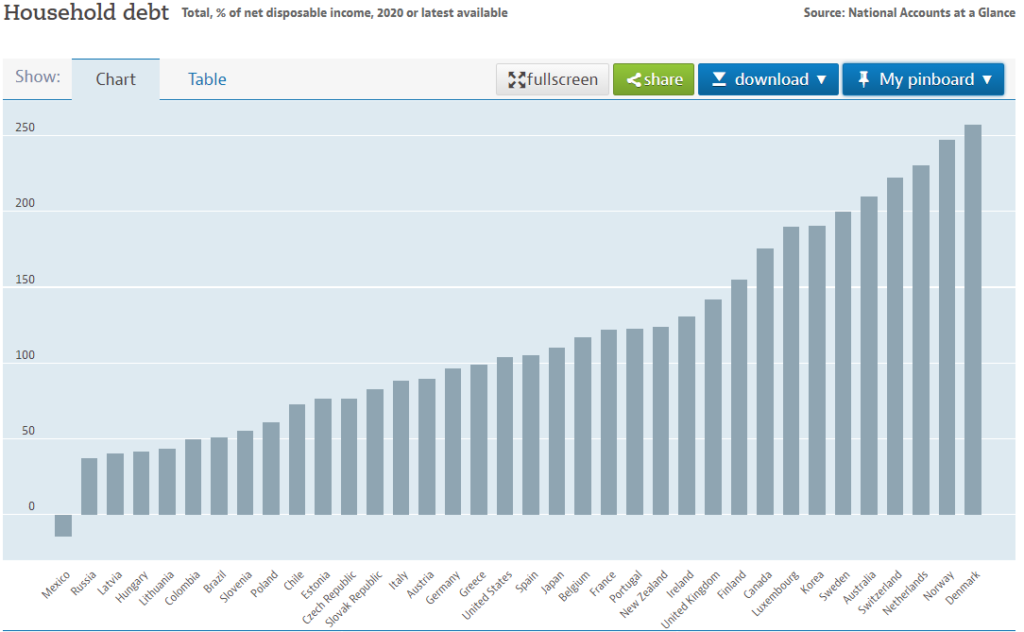In the context of a turbulent period that has exposed the rifts between different communities, many employers are wondering how to bring their organizations together and create a better employee experience. Bridging the digital divide between those with different access to technology, space, and skills can help raise employee satisfaction – and internal communications can support this.
If you subscribe to Albert Camus’ view that “Fiction is the lie through which we tell the truth,” then Netflix’s latest South Korean hit show may provoke some urgent questions for organizations. If they’re to stop a digital information divide between the haves and the have-nots from damaging employee experience, companies must bring all co-workers together through internal communication tools that enable collaboration, integration, and far-reaching corporate communication.
Building an intranet business case
Debt-trap economies result in disparity and disengagement

If you’re one of the few people who haven’t seen it yet (no spoilers), 2021’s biggest TV show depicts the plight of 456 people so severely indebted that they agree to participate in a life-or-death competition based on a set of children’s games.
Fiction it may be, but articles have already begun to appear suggesting that the origins of the popular show lie in a deeply fragmented South Korean economy. An economy where “heavy debt loads and yawning disparities have created deep socioeconomic problems.”
In fact, despite having a relatively high performing economy, South Korea now ranks in the top ten countries globally for households with the highest debt-to-income ratios. This appears to have happened at least partly because growth has continued at a macro level, but rising housing costs and slow wage inflation have left many individual households struggling to cope.

This goes to show that a country (or a company) can perform incredibly well in the markets but still hold internal challenges for individuals who do not see the same increases.
When we transpose the story to organizations, however, we move from discussing a financial divide to a digital or data divide.
Building an intranet business case
If businesses wish to create positive company cultures with outstanding employee experiences, they must prevent the emergence of two tiers of employees: the information and opportunity super wealthy vs. the time-pressed, information-starved indebted. As the workplace changes though, and remote and hybrid working become more mainstream, this is a very real challenge faced by many who feel they have less opportunity and access than their peers.
Pre-pandemic, back when remote working was more limited, working in-office or on-location meant that most employees enjoyed the same advantages; access to fast broadband internet, advanced technologies, and ergonomically-designed spaces in which to work. With the shift to home working, however, this situation risks becoming more complex and less egalitarian.
The digital divide in the workplace

A report by The Century Foundation in 2020 highlighted that prior to the COVID-19 pandemic, approximately 42 million Americans lacked the ability to purchase broadband; a situation worsened by the pandemic.
“Roughly half of low income families have struggled to pay their internet and cell phone bills. Millions of unemployed workers had trouble navigating state unemployment websites, while almost 15 percent of students face barriers in remote learning conditions because they lack access to high-speed internet at home.”
This is the digital divide in action.
Building an intranet business case
Poorly performing connections and technologies for some cause disadvantages that can damage productivity and employee experience. The same problems don’t exist for those with good access and space in which to work at home—usually the more senior, affluent employees—who are free to flourish.
In addition to reducing productivity, this differential access can cause fragmented workplaces and resentment as one part of the workforce receives more advantages and the others are pushed further from the center.
Bridging the digital divide in an organization

How can organizations fix a digital divide for all remote and hybrid workers? The solutions are complex and will depend on investment in technology and other resources.
If they fail in the mission to provide equal access to time, technology, and space, however, the existing gulf between information rich and poor employees may intensify and leave some people at a grave disadvantage, disengaged from their work and their company’s culture.
Although internal communications and employee experience platform tools cannot fix the situation entirely, the opportunity exists for senior leaders, HR, and communicators to create corporate communications strategies that can at least work to bring teams together in understanding and collaborative work. This would meet the goal of most communicators, to raise engagement, to improve employee experience, and to optimize company culture.
Building an intranet business case
The challenge: bridging the digital divide for at-risk workplace communities

Before you develop particular internal communication solutions, you need to know which segments of an organization are facing the greatest challenges to not fall behind in the digital divide.
Research by Gartner identifies at least three at-risk groups in the new remote and hybrid workforce. It is these employees particularly whom Gartner suggests have to suffer career disadvantages because of the challenges they face:
Digital introverts
Whether they lack digital training, are shy in front of the camera, or are reticent to constantly appear on virtual meeting screens, some of our colleagues can be characterized by their digital introversion. This is perhaps even less surprising when we consider that “Zoom dysmorphia” and mental health issues arising from associated virtual meeting pressures are having an increasing impact.
Digital introverts may be uncomfortable with talking in virtual forums, which may result in them being overlooked for key projects or not receiving beneficial career advancements because they are quieter than some of their peers.
Building an intranet business case
Women
Data from the Institute for Fiscal Studies showed that during 2020, mothers spent more time than fathers on childcare and other household responsibilities. The research identified that mothers spent two hours less on paid work and more on unpaid household duties than fathers.
If workplaces are to ensure that disparities are minimized, gender should be considered as a potential fault line and initiatives taken around corporate communication and access to advanced employee experience platforms.
Younger staff
Due to a lack of in-person training and mentorship, junior employees may be greatly disadvantaged by a wholesale move to remote working. These more junior colleagues and new starters—particularly those who are just starting their careers—may be hindered by lack of onboarding, digital resources, and training programs, so it’s essential that as much of this as possible can be administered smoothly through digital workplace tools like company intranet software.
The opportunities: fixing the digital divide through inclusion, understanding, and technology

The digitally introverted, women responsible for children, and younger employees have all been identified as vulnerable within a digitally divided workplace functioning along remote and hybrid lines.
One way that organizations can ensure all employees have access to the right resources, important corporate communications, and social aspects of their workplace is to use internal communications technologies to place a greater focus on diversity and inclusivity.
Senior leaders can support this through the construction of empathetic, employee-centric cultures that place as much importance on remote, frontline, and location-based workers as they do on in-office employees. To achieve this, organizations can develop robust digital onboarding and training programs, alongside multichannel communications, to ensure that those at home benefit from the same opportunities and information.
By creating a workplace that reaches everyone, regardless of whether they’re operating from a mobile phone or a laptop, you can at least go some way to showing how valued they are. Reducing the digital divide will certainly require investment in technology and resources, but creating a vibrant, resilient company culture may also help.
Building an intranet business case
If you already have a supportive, open culture where voices are recognized and where two-way feedback is encouraged and technologically enabled (whether that’s in meetings or on active intranet communities, blogs, and forums) then you stand a much better chance of engaging with individuals who may feel left behind. Encouraging everyone to voice their own challenges can create a sense of shared understanding and acceptance too.
When it comes to how they receive communications too, every individual is in a different situation. Office workers may prefer emails or notifications, but for frontline workers or those in different locations, SMS messages and mobile app push notifications may be more valuable. Your internal communications strategy should ensure that everyone has access to key company updates so they don’t find out second- or third-hand and feel devalued by the experience, which is why updates should be shared via an internal communications email platform that also enables communications across multiple other channels.
Ultimately, if business leaders want to have engaged, proactive workers, bridging the digital divide is crucial. Listening to the experiences of a workforce and putting in place structures that can match their needs and expectations can build employee advocacy in a market that grows more competitive for top talent every day.


